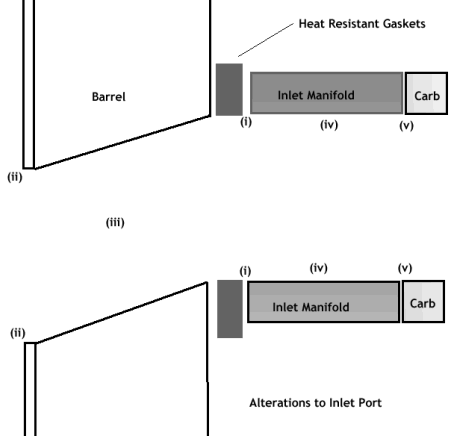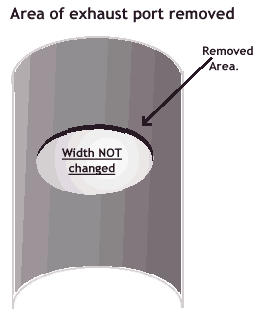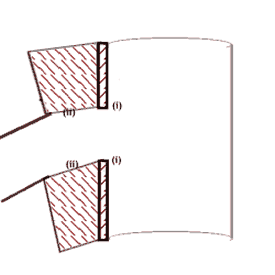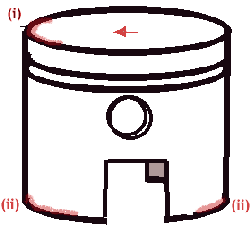 |
Modifications - Porting
|
[ Home ] [ MZ Links ] [ MZ Main Index ] [ Search Site ] [ Join The MZ Riders ]
The following cannot guarantee success for your ETZ 250, but there is a book
by A. G. Bell, "Two Stroke Performance Tuning" which gives the general
theory.
General cleaning up of all the ports improves the gas flow. This helps at
high revs as well as reducing the 3000 rpm bottom limit.
Smoothing the inlet manifold, inlet port, trimming gaskets (so as to not
protrude into the ports) increases the bottom end response. Bevelling the cast
iron barrel around the ports reduces the risk of the piston clashing with the
ports.
Messing with the transfer ports is rather risky, so changing where they
emerge onto the barrel inside is not advisable.
At The Barrel-Engine Case Interface
What can be done?
Ensure that your new paper/card gasket does not cover the transfer port at
the edges. Smooth the ports - small fingers are necessary. Ensure you do not
allow anything to fall into the big end/con rod hole, even dust from abrasive
paper. Cover it!
The Inlet Port
|
- Gaskets must not protrude into the inlet tube.
- Very slight bevel inside of port, about 0.5 to 1.0mm.
- Barrel, aluminium casting is usually very abrupt, smooth this with
very coarse carborunum paper then fine paper (or file).
- Smooth inlet manifold with wet and dry paper.
- Carburettor and inlet manifold need to be matched properly, file and
paper down. Clean carburettor and reset.
|
 |
The Exhaust Port
This has been opened up from the TS to the ETZ range, but you will still find
room for improvement.
Enlarging the port improves top end power but it is quite near to the limit
already.
Some modification to the piston can be made, but remember that metal is a lot
more difficult to replace than to remove. So only take off small amounts then
try the engine out.
 |
- Very slight bevelling of all ports makes the likelihood of piston
ring/barrel conflict much smaller. This is important on the largest
ports, i.e. the exhaust and inlets.
- Enlarging the port vertically by 0.5mm steps (+ slight bevel)
increases the time exhaust gases can escape per stroke, enlarging the
edges increases the amount of gas that can escape.
Do Not Enlarge Sideways Past
The Original Width. |
|
- Slight bevel on port.
- Major filing/grinding and smoothing required on both aluminium and
iron to give a smooth exit path for waste gases.
|
 |
The Piston
The piston can be altered, instead of the exhaust port, by
removing 0.5 - 1.0mm on the front of the piston - gentle gradient - very smooth
- this is the hottest part of the piston in use.
 |
- 0.5 - 1.0mm removed for increased top end power.
- Bevelled piston 0.5 - 1.0mm up the side to ensure no fouling with the
ports and to allow petroil mix to slide up the barrel, reducing
friction.
|
No Responsibility Can Be Taken For
Missing/Untrue Information or Incompetence.
Remember,
- Put every thing back - CLEAN - with proper gaskets (squish band 0.7 -
1.2mm)
- If you remove too much from the top of the piston or exhaust port you get
a reduction in power.
- The carburettor settings/jetting may require adjustment for a leaner mix
due to improved flow.
Many thanks to Kevin Holder.
Back to Top
|



